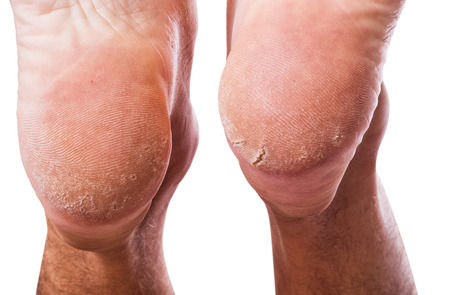How to cure a fungal toenail infection
- Felicity Burnell

- Sep 3
- 3 min read
Updated: Sep 8
Treating a fungal toenail infection, also known as onychomycosis, can be challenging, and it typically requires a combination of home remedies, over-the-counter treatments, or prescription medications. It's important to note that fungal nail infections can be stubborn and will take several months to clear up completely.

10 Steps to Curing a Fungal Toenail Infection Here's a step-by-step guide on how to treat a fungal toenail infection: -
1. Proper Diagnosis of Fungal Toenail Infections (Onychomycosis)
Before starting any treatment, confirm that you have a fungal toenail infection. Symptoms may include thickening, discoloration (often yellow or white), brittleness, and a foul odour. Consult a podiatrist for a proper diagnosis.
2. Good Foot Hygiene
- Keep your feet clean and dry.
- Wash your feet daily, and make sure to dry them thoroughly, especially between the toes.
- Use a separate, clean towel for your feet to prevent spreading the infection.

3. Trim and File Nails
- Trim your toenails straight across to prevent them from growing into the skin.
- File down the infected part of the nail to reduce thickness.
Do not use the file on other nails to prevent spreading the infection
4. Over-the-Counter (OTC) Antifungal Treatments
- Many antifungal nail creams, ointments, and solutions are available without a prescription. Look for products containing active ingredients like clotrimazole and terbinafine.
Some non-medicinal products state 'results in two weeks' - this is a lie
A lot of products advertised as antifungal treatments contain an acid (to create an inhospitable environment) and a softener - but not a genuine antifungal agent
- Follow the instructions on the product's packaging carefully
- Be persistent, as these treatments will take several months to show results.

5. Prescription Medications
If OTC treatments aren't effective, or multiple nails and/or the skin is also infected, consult a podiatrist, your GP or a dermatologist. They may prescribe oral antifungal medications like terbinafine (Lamisil) or itraconazole (Sporanox). These medications are typically taken for several weeks or months. There is advice on the safety of these medications here. They are THE most effective treatment for recalcitrant fungal toenails.
6. Laser Therapy
Laser only works when used alongside application of a topical antifungal. Recent research demonstrated that no frequency of laser killed fungus in isolation.
7. Surgery
The toenail is surgically removed under local anaesthetic, and the nail bed is treated with a topical antifungal to prevent the new nail from becoming infected with fungus.
8. Preventive Measures
- To prevent reinfection, always wear clean socks; bamboo is a great option as it is naturally antimicrobial
Treat spores in footwear and hosiery
- Avoid walking barefoot in public areas, especially around pools and communal changing rooms.
Treat fungal infections elsewhere on your body to avoid cross-contamination
Dry feet thoroughly after bathing; this literally bats the spores off the body!

9. Patience and Persistence
- Fungal nail infections are slow to clear up - healthy toenails grow at a rate of 1mm per month; it's important to be patient and consistent with your treatment regimen.
- Continue treatment until the infection is completely gone, as stopping too soon may allow the fungus to return.

10. Follow-up with a Podiatrist
- Keep scheduled follow-up appointments with your podiatrist to professionally reduce the thickness of the nails, monitor progress and make any necessary adjustments to your treatment plan.
It's essential to consult a podiatrist for an accurate diagnosis and who can tailor a treatment plan to your individuals needs - plus prevent you from wasting your hard-earned dosh medicaments that won't work!
Want to have a chat about your feet?
You can book a virtual consultation with Felicity and send across photos for her to review. Book an appointment here. Disclaimer: the advice in this blog, and all blogs within this site, is for information only and is not a replacement for medical advice.
#podiatry #chiropody #podiatrist #footexpert #dermatology #skincare #podshealheels #podsfixfeet #plantarfasciitis #footpain #lumpsnbumps #proudtobeapod #fungalnails #fungalnailtreatment #retronychia #arthritis #osteoarthritis #functionalhalluxlimitus #bunions #skincare #crackedheels #footstrikehaemolysis #ingrowingtoenail #toenails #ingrownnail #feet #runner #running #runclub #runnersproblems #athletesfoot #painfultoe #hardskin #footproblems #feettreat #oxford #oxfordshire #selfcare



Comments